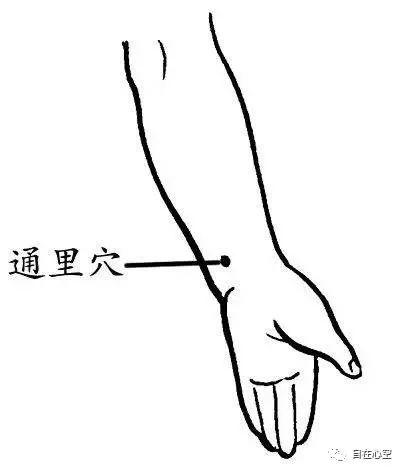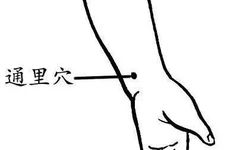Luo vessels are branches that diverge from the main meridians, serving to strengthen the connection and regulation between the Yin and Yang of the interior and exterior. Each of the twelve meridians and the Ren and Du vessels has a separate Luo vessel, totaling fifteen Luo vessels.
Hand Shaoyin Luo Vessel is one of the fifteen Luo vessels. According to the “Ling Shu. Jing Mai”: “The branch of Hand Shaoyin is called Tongli, located one and a half inches from the wrist (the term ‘half’ should be omitted according to Volume Nine of the ‘Huangdi Neijing Taisu’), it diverges and ascends, following the meridian into the heart, connecting to the root of the tongue, and belonging to the eye system.” This Luo vessel branches from the Tongli point, located one inch from the wrist, diverging to connect with the Hand Taiyang Small Intestine Meridian, and ascends at a point one and a half inches behind the wrist, entering the heart and connecting to the root of the tongue, belonging to the eye system.
The Hand Shaoyin Luo Vessel serves to connect the Hand Shaoyin Meridian with its corresponding Hand Taiyang Meridian, primarily functioning to communicate between the two meridians and supplement the flow of the meridians.
When this Luo vessel is affected by disease, it can lead to fullness and distension in the chest; if deficient, it may result in an inability to speak.

Tongli Point
Tong means to connect, and li refers to neighboring; the Hand Shaoyin Heart Meridian diverges from this point to connect with the adjacent Hand Taiyang Meridian, hence the name Tongli. Location: On the palmar side of the forearm, at the radial side of the flexor carpi ulnaris tendon, one inch above the wrist crease. Method: With the palm facing up, make a fist, and measure one transverse finger from the wrist crease along the depression on the inner side of the ulnar tendon.
Function: Clears heat, calms the spirit, and promotes circulation in the meridians.
Indications: Sudden loss of voice, tongue stiffness and inability to speak, acute paralysis of the stylohyoid muscle, sore throat, tonsillitis, cough, asthma, sudden aphonia, palpitations, anxiety, pain in the wrist and arm, febrile diseases, headache and dizziness, eye pain, angina pectoris, bradycardia, arrhythmia, neurasthenia, mania, schizophrenia, hysteria, hysterical aphasia, fear and anxiety, pain in the arm, elbow, and wrist, pain in the posterior inner side of the forearm, finger spasms, heart pain, dizziness, vertigo, wrist joint pain, insomnia, facial redness, throat obstruction, fatigue and excessive sleepiness, metrorrhagia, enuresis, gastric bleeding, endometritis, etc.
Needling Method: Insert the needle straight 0.3 to 0.5 inches. Local soreness and distension may be felt, and the sensation can also travel down the Heart Meridian to the ring finger or little finger, or ascend along the Heart Meridian to the forearm and elbow, with some cases extending to the chest.
Moxibustion Method: Moxa stick moxibustion for 1 to 3 cones; or moxa stick for 5 to 10 minutes. Massage: Massaging the Tongli point can treat sciatica; for unilateral sciatica, massage the Tongli point on the opposite side.

